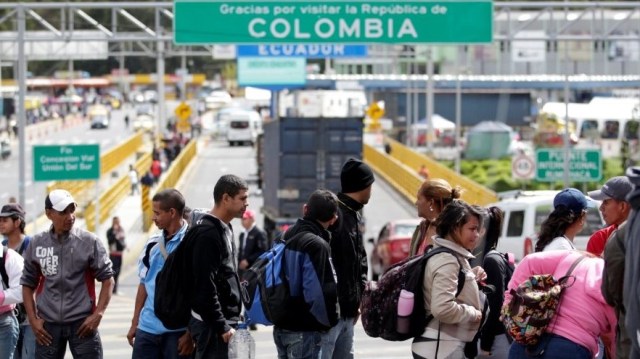
Protecting the hundreds of thousands of people going to neighboring countries has a cost that must be covered. The Ottawa conference didn’t reach the amount we needed.
By Caracas Chronicles – Betilde Muñoz-Pogossian
Jul 30, 2021
By July 2021, there were already 5.6 million Venezuelans who had left the country, with 82% or 4.6 million settling in Latin American and Caribbean countries. It’s also expected that new waves of Venezuelan migrants and refugees would go to these countries because of the geographical proximity among other reasons, but mainly because of the family and diaspora networks that have been established.
I always say that countries of the region have responded with solidarity, in the best tradition our region has operated by. However, solidarity has a cost, much more so for these countries that were already facing challenges to economic and human development when the waves of Venezuelan migrants and refugees started to come. By the way, all this was aggravated by the economic effects of the pandemic.
It’s no surprise that UN agencies providing assistance in the midst of the Venezuelan migratory crisis, as well as receiving countries themselves, have developed response plans that quantify the cost of protecting these Venezuelans, and of supporting their receiving communities. These quantification exercises are helpful to understand the extent of the crisis, how much is needed, and how much the international community has progressively invested in addressing this migrant and refugee crisis, the largest the Western Hemisphere has ever faced.
The balance suggests that the Venezuelan migratory crisis has been largely underfunded, and by 2021 is the most underfunded crisis at the global level.
A Brookings report looks at the Venezuelan crisis from a comparative perspective and reports, for instance, that in the case of Syria, “there has been over $20.8 billion of funding (in total) since the beginning of the exodus. In the case of Venezuela, by 2020, the number was only $1.4 billion – a much smaller number despite the similarity in the number of refugees.”
They show the major variation in the amount of funding given to address humanitarian and development needs for groups of refugees, confirming that the international community has invested $3,150 per Syrian, $1,390 per South Sudanese, and a mere $265 per forcibly displaced Venezuelan.
For 2020, we know that USD 1.35 billion was needed to provide a response. Only half was raised.
By 2021, an estimated US$1.44 billion is needed to provide humanitarian and development support to these countries and migrants and refugees themselves. This would be additional to the US$762 million quantified by UN OCHA to address humanitarian needs inside Venezuela. Even less was raised.
Indeed, in 2021, Canada took the leadership to try, once again, to find funding to cover the needs of protecting Venezuelans. Following the Spanish government and the European Union’s lead in 2019 and 2020, the Canadian government hosted, on June 17, an International Donors’ Conference in Solidarity with Venezuelan Refugees and Migrants with four objectives:
- Highlighting progress achieved to date
- Raising awareness of key opportunities, areas of priority, and challenges, including the impacts of the crisis on women and girls
- Mobilizing additional resources, and
- Identifying future actions to maintain focus on the crisis and help ensure that commitments are honored
…
Read More: Caracas Chronicles – Midway through 2021, Venezuela’s migratory crisis remains underfunde
…

